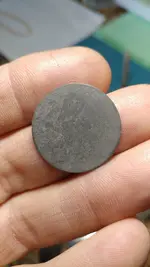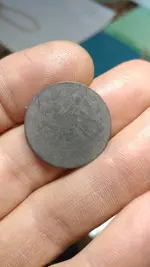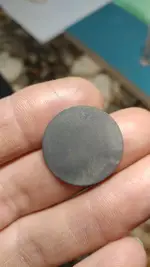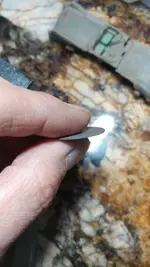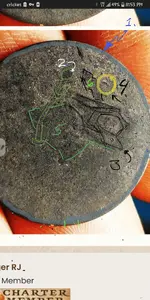The object appears to certainly have some faint design detail on both sides, so likely a coin or token as previously mentioned here. Trying to decipher the design details is about like looking at clouds in the sky though, as suddenly the mind creates all types of shape associations that change with every angle. The best approach is process of elimination to pin down a time period first. Coins and some tokens that circulated as coins long ago, could circulate a good 40-50 years, before they became entirely slick without defining details. Ascertain a rough time period of the site location this came from, based on known history and other finds, then subtract a number of years for circulation wear. Example: The recovery location is around 1870’s-1880’s, minus 40-50 years circulation, then possibly an 1820’s-1840’s coin/token. Then measure diameter and weight of this, in millimeters and grams, taking into consideration there will be circulation loss there as well. Proceed with the rough time frame and size/weight info, and look through foreign coin reference books and catalogs.
Over the years I personally dug all types of odd foreign coins from Europe, Canada, Mexico, Central and South America, etc.. Having purchased several of Krause’s reference books on coins helped immensely in identification. Looking at non-dug coins of the same approximate age and size, makes it much easier to interpret the details on a worn crusty dug coin, because often we will see what to look for! Otherwise we are trying to connect dots that maybe do not even exist. 😉



